#Chemical compunds
Photo

#chemistry#science#solutions#balance#my chemical return#bonding#geometry#copper#coordinate#oxidation#state#electron#hybridisation#compund
1 note
·
View note
Note
Haha yeah I sure hope that cure doesn’t have any side effects that could possibly be really bad or anything hahaha…
…Compound v0da, right?

Haha. I think I may have found what that is and I am
worried
There’s a comic with Masswenth that Splatjack made that’s floating around somewhere…
Oh you're talking about THIS comic, I'm telling ya ever since I saw this damned note I couldn't stop thinking about this!!!
Like, this compound isn't exactly a bad thing, it literally regenerated Arlers arm back! I don't know exactly what else it does, but I'm assuming it makes the body stronger and all that, perhaps even it can make you immortal? The darkening of the skin could be a side effect caused by Abyssals blood being mixed in the Chemical! (Also I'm curious as to why Arler's blood is black in the comic, maybe he was already putting some weird stuff into his body? Who knows who knows...)
ANYWAY Why do you think Alex used this Compound? (How did he even get it? Tam knows about it and what it is too... Did they get into Arlers hideout? Yet again, who knows,,,,,) Do you think he was so desperate to save his friend that he decided to take the risk and put a bit of the Chemical in the cure? Man... The side effect of the cure is coughing yeah? And we can see Arler coughing in the comic too...... Also, I'm assuming Tam's skin didn't turn immediately black cuz there was only a lil bit of the compund in the cure. But after a while he probably started noticing his skin darkening around the place he got the cure injected..... And it was probably painful too!
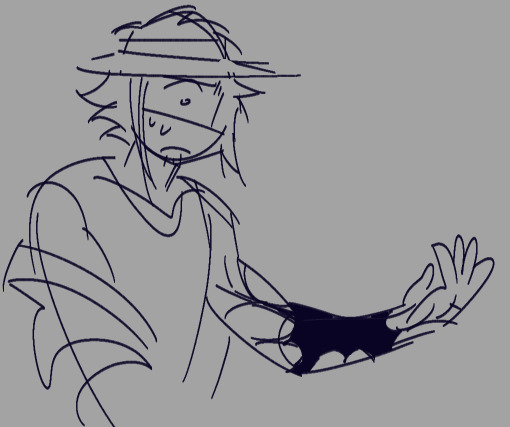
GRAAAHHHH these guys drive me insane!!!! /pos
Anyway this is all just my insane thoughts and speculations *smile*
23 notes
·
View notes
Note
Spark of Genius
One day, the entire Shie Hassaikai compund spontaneously combusted due to Eri creating chemical weapons out of a tea set. She was then sent to I-island where Mei, Izuku and Melissa collectively adopted her.
Well it's either that or a secret Spark running an entire criminal organization
22 notes
·
View notes
Note
∞
got Chemical Overreaction/Compund Fracture by will wood and the tapeworms, I fucking ADORE this whole last bit:

actually made a little art post w it a little while ago too
#a lot of will wood tonight#(which makes sense I think I've liked almost his whole discography lmao)
4 notes
·
View notes
Text
About me
I was tagged by @mathomhouse-e who did the lord's work and tagged a bunch if not all of us 🙏☄️
Nickname: Paté/Bruno just my names lol, but someone did call me Hope on discord and I liked it, any if fine
Sign: Aquarius
Height: 5'7-8"?? (1.74 m)
Last thing I googled: "begegnungen book guide reddit" trying to get back into learning german hoho but I think I'll use another book
Song stuck in my head: Indigo Night by Tamino (names escape me but this someone's fault)
Number of followers: 149 ily all muak
Amount of sleep: Always just a bit bellow or above what I need
Dream job: Something in Translation/Interpretation probably! Still pondering that stuff.
Wearing: Jean shorts and a black tshirt slowly but surely getting damp with sweat. Sneakers and a jean jacket for when I go out later!
Movies/books that summarize you: Just one movie lol but Mathilda, NBC Hannibal and Monkey island 3 (spanish dub important!!) are a solid 3
Favorite song: Right now Chemical Overreaction/Compund Fracture by Will wood and the tapeworms. It will change as soon as I post this.
Favorite instrument: Voices def, but violin and piano and drums and-
Aesthetic: Were it be socially allowed, and not make me fear my safety on the streets, I'd dress like a gothic prince. As dramatic as possible, I want to look insufferable.
Favorite authors: Julio Cortázar is the only one I've read enough to say this really
Random fun fact: i can crack my knuckles constantly by just moving them
Aaand I'll tag anyone who wants to do this! Feel free! Take your chance!
5 notes
·
View notes
Text
What to do with a tie?
I checked and Iodine vs Astatine was at a tie for a bit so...
Say Iodine and Astatine tied, the three options would do
Iodine (53) & Astatine (85)
Coin flip for 1 to advance
Element 138 (138) with a description jokingly explaining the fusion of the two constituents
Astatine Iodide (AtI) with a description of the chemical's properties
#fuckable elements poll#I feel like the third option is stupid but funny to me#the fourth seems potentially interesting
3 notes
·
View notes
Note
wait u said ur special interest is weed?
dude i have a question. i have autistic sensory issues and i have NOT been able to like weed, bc it leaves me feeling like im constantly falling. like the feeling of hypnic jerk just before u wake up. is that what all weed does? is there a specific strain or group of strains (?) to look for to avoid that feeling, or to have less body sensations? i know people say 'oh just try sativa' but that's. that's a whole big category.
also what chemical thing in weed makes my body feel like it's falling? have any idea?
This ask just made my day!! Maybe it's embarrassing, but it is one of my biggest special interests. Unfortunately, finding the "right" strain is incredibly complicated and based off each individual person's body and preferences, as well as factors like cost and location. Prepare for a long winded response.
Here are some tips for understanding the science behind weed and finding a strain that will work for you!
First off, indica and sativa is a classification that came about in roughly the 17th century and initially was only actually an indicator of where the plant was grown in the world! Sativa was what most people were smoking and Indica originally simply meant "grown in India". Obviously due to the difference in growing location, the plants looked different, smelled different, and had different effects when smoked-which is where the common misconception today comes that sativa gives you an uplifting head high and indica locks you on the couch. But the classification of indica or sativa actually means absolutely nothing! It's really all about terpenes!
Terpenes are chemical compunds found in all plants! When it comes to weed specifically, the terpenes found within the plant often dictate the general effects of the strain. Here is a great article that describes some of the widely associated effects of different common terpenes and strains that contain those terpenes!
The feeling of falling right before you wake up in a dream is a sensation I generally feel after I've smoked strains with the terpene Myrcene in them! Myrcene is generally described to offer a sedative effect-so if you don't like the feeling, I would start by trying to avoid strains with Myrcene and other terpenes simply described as "sedative".
On the other hand, terpenes like Farnesene and Limonene may at times be described as sedative, but are primarily described as "anti anxiety". Strains with these terpenes are generally better for people who get anxiety from smoking but still want to find their strain. My wife used to get very bad anxiety from smoking, so when she decides to smoke with me I like to find strains with those terpenes in them. She does not get anxiety anymore when she does choose to smoke!
Obviously, finding strains with certain terpenes is easier said than done sometimes. I exclusively buy from dispensaries because I live in Michigan where there's a dispensary with incredibly affordable options around every corner. I can buy a strain from a dispensary, google exactly who grew it, and oftentimes there's already a list of terpenes online for that exact strain.
But what if you buy from a plug?
This is where it gets a bit complicated. It goes without saying that if you are in a location where recreational dispensaries are legal, you are of age, and you have the money, then you should probably go there. I'm not stupid or entitled enough to think everyone is in that position, however. I spent my first several years of smoking buying from plugs. Obviously, try to only buy from very trusted sources-I have met a number of people who have bought weed from a plug that was laced with several different things. If your plug can tell you what strain you're buying, you can look it up to see what terpenes might be in it. That isn't always foolproof because you don't know the growing conditions of the plant and so many factors can contribute to the effects of a strain. On top of that, sometimes you'll buy a strain even from a dispensary that just straight up doesn't exist!
So what do you do?
My recommendation? Smell it!!! If you're buying a strain pretty blindly, give it a sniff. Terpenes generally have scents and flavors associated with them. Look for citrusy and sweet scents-many terpenes with anti anxiety effects are sweet, floral, and/or citrusy. Myrcene, a terpene mentioned above, generally smells earthy and spicy, so avoid those scents if you want to avoid myrcene!
Finally: If you continue to try weed and keep testing out strains and it still doesn't seem to work, maybe it just isn't for you! Weed helps lots of people, but just like everything else it isn't a cure all! You aren't lame and you don't have a stick up your ass if it doesn't work or even if you simply don't like it!
Thanks for the ask, I hope this helps! Happy smoking!
#anon#weed#sorry for definitely annoying everyone on the dash with this but boy howdy will i answer any ask related to weed#i never answer asks tbh but this is how youll get me to post an mla article on tumblr at noon on a saturday
3 notes
·
View notes
Text
Cannabinoids: What Are They?

In the world of Cannabis, cannabinoids can said to be the main pillars of the plant. They are natural chemical compunds found in the Cannabis plant that interact with our central nervous system in different ways. These compounds are cousins to the endocannabinoids naturally present in our bodies, working together to promote inner harmony and well-being. Among CBD compound, known for its physiological benefits like stress reduction, and THC, famous for its psychoactive and medicinal properties. But this is just the beginning; there are over 85 identified cannabinoids in the Cannabis plant, each with its unique purpose, adding to the plant's value as a source of therapeutic compounds. It's like an exploration of a plant world, where each cannabinoid is like a different element that interacts with its surroundings and results in showing cannabis's potential benefits.
To know more about the Cannabinoid, read in detail here: Cannabinoids: what are they?
1 note
·
View note
Text
What is Sodium Sulphate and why is it used ?

Sodium sulfate (Na2SO4) is a white crystalline compund also known as Glauber's salt.Sodium sulfate is used in a wide range of industries, including:
Detergents
Textiles
Glass
Pulp and paper
Chemicals
Sodium sulfate is also used in medicine as a laxative to treat constipation
For more information visit https://nikava.in/sodium-sulphate/
Contact +91 9769984566
Email [email protected]
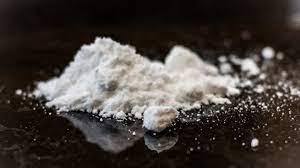
0 notes
Text

U-Protec Silver back fill compound.
U-Protec Silver Backfill c=Compound is Bentonite based chemical with graphite. The Characteristics of the compund is highly conductive, hygroscopic, non-magnetic, non-corrosive in nature and have best moisture retaining qualities.
#lightningarrester#lightning#lightningprotection#protection#earthingprotection#safety#protecthome#earthingproducts#lightningproducts#lightningarresters#copperbondedearthrod#earthingrod#intersolar#earthing#wholesurgeprotection#electricshockprotection
1 note
·
View note
Photo

Check out my Geek collection at my @threadless Artist Shop (via Shop the Geek Collection)
#geek#nerd#geeky#nerdy#science#scientist#cjhemistry#molecule#methane#organic chemistry#chemist#chemical#chemical compund
1 note
·
View note
Text
wretch and pule, this panoramic
stretched out view is fat with panic
precognition lacks in hindsight
we caught the illness back before the twilight
i might be a saint worth steeples
i might be the brain of evil
bad things happen to good people
good things happen to me
3 notes
·
View notes
Photo
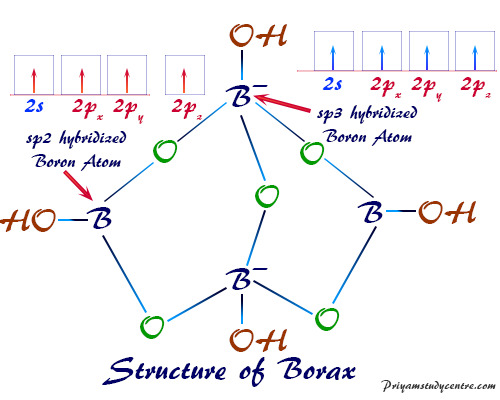
Borax, commonly known as sodium tetraborate decahydrate is an important compound of born and broadly uses in our daily life.
2 notes
·
View notes
Text
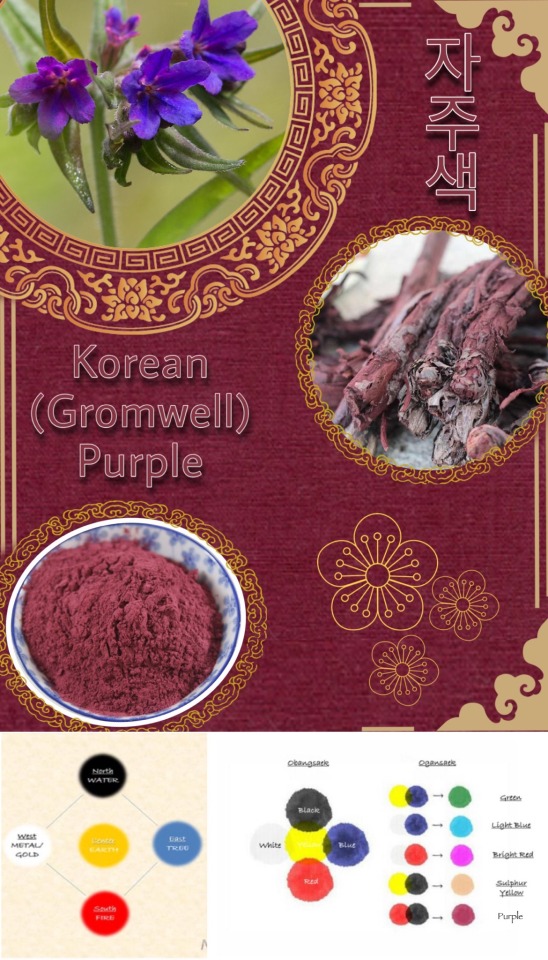
- A Brief Introduction to Korean Purple Dye -
For those who are into historical costuming or who simply love useless trivia, let us talk about a fascinating topic - 자주색 (jajusaek) or purple!!!
Before synthetic dyes, such as synthetic purple invented by English chemist William Henry Perkin (1838-1907) were created and commercialized during the Industrial Revolution, dyes were painstakingly done by sourcing, transporting, mixing, adding, oxidizing, etc, chemical compunds found in animals, plants, and minerals. That meant that animals such as insects, snails, flowers, and mineral rocks were crushed, mixed, and/or treated in a complex process to generate specific colors.
Dyeing was once an elevated art form that not many could afford like in the case of purple. Purple is considered by many historians to be one of the most, if not, the most difficult dye to produce naturally. Don’t believe me? Just check the World History Encyclopedia Page to see how one of the most famous purples, Tyrian Purple, was produced in the West [here]. The reason why it was so difficult is because sourcing the natural chemicals for the dye from hard-to-find natural producers took time, knowledge, and money as well as developing complex processes that would ensure the vibrance, adherence to the fabric, and life-span of a dye that just didn’t cooperate. In short, it was a headache.
Nevertheless, that doesn’t mean that the West had a monopoly on purple. Asian cultures also knew how to produce the color. However, I wish to focus on Korean purple, also known as Gromwell purple, which comes from the Gromwell plant (lithospermum erythrorhizon) or, rather, its roots. While the Gromwell plant itself produces vibrant reds termed 자초 (jacho; called after the plant), the roots could be grounded into a fine powder to produce a reddish-purplish color similar to plum that had warm undertones. To make the fibers of the desired fabric absorb the dye, it was necessary to use an alum mordant which helps the colors gain their brilliance and protects them from being washed away for a long period of time. For an extensive lesson on Korean dyes throughout Korean history from the Baekje (백제) era until today, check out this blogpost:
Fun Fact: the Japanese termed the purple they got from the Gromwell plant, their main source of purple, as “murasaki” which, if you are familiar with Japanese culture, literature, or history, you would know that’s the alias that the author of The Tale of Genji is known for today. Back to Korea.
Some of the other plants used in the Joseon era (1392 A.D.- 1910 A.D.) to make purple were sappan wood and hollyhock which produce reds and and blues respectively [Kim, 2014]. They are also both found in various parts of Asia, including Korea. If you’re curious to see what sappan wood reds and purples look like, then I invite you to check out this blog post:
The Gromwell plant’s significance to Korean culture cannot be understated as it was not only used to dye fabrics but also cosmetics, to create paint, and as traditional medicine for inflammation and burns [Cho et al., 2008]. Additionally, it helped create one of the colors of the Ogansaek (오간색) or the five secondary colors in Korean culture.
The purple we avid consumers of historical K-Dramas are familiar with that is often used to dye modern hanbok recreations is NOT historically accurate. It’s this blueish purple rather than reddish purple that was not available in the peninsula until after the 1870s when artificial dyes were first introduced to Joseon society [Song & Hong, 2019]. Many modern day purple hanbok on TV screens look like laser beams ready to damage corneas. That specific shade of purple that has cool undertones and seems highly saturated would not be possible using plant, animal, or mineral-based dyes.
The first widespread use of purple in Korea as a symbol of status came from the Baekje Kingdom (18 B.C.- A.D. 660) where the king was
[…] known to have dressed in a wide-sleeved violet garment, blue silk pants, a white leather belt, a gold or black silk hat and black leather shoes. Other documents said Baekje courtiers wore colored belts (purple, red or blue) to distinguish their ranks [Kim, 2020]
This color system to identify courtiers and even the social classes in general was adopted fully by the Silla (57 B.C.– 935 A.D.) Kingdom in the 6th century A.D thanks, in part, to the new caste system developed in 520 A.D., the Bone Rank System (골품제도). Those sitting at the top two ranks “sacred bone” (성골) and “true bone” (진골), were the only ones who could wear purple. If you wish to learn more about the Bone Rank System, then check out this link:
By Queen Seondeok’s reign (632 A.D.-647 A.D.) the color ranks for courtiers at Silla court from highest to lowest were purple, red, green, and cyan blue.
During Goryeo (918 A.D.-1392 A.D.), dye manufacturing specialized facilities appeared and the previous Silla color system was upheld for the first half of Goryeo but the Bone Rank System did not survive [Anderson, 2019]. However, purple still retained its high-status association [Kim, 2020]

From left to right: All three are Goguryeo (고구려) (37 B.C.-668 A.D.) purple robe recreations based on archeological evidence [source], [source], [source].
By the time of Joseon, purple was still being used by the upper classes but with notable differences. For instance, red came to replace purple as the color for the king since red went on to signify a stronger connection with masculinity (yang) and also due to Ming influence. Kings still wore purple robes but for casual wear while, for ceremonies, they would switch to red. High ranking courtiers also shifted away from purple and into deep crimson reds. As far as the court women were concerned, Park Hyunjung for the Journal of the Korean Society of Clothing and Textiles writes:
The color rank of the Wonsam is as follows: the Queen’s color was red, the Crown Princess’ was green and purple, the royal concubine’s was usually green and blue, but they could wear purple when they won the King’s favor. A prince’s wife’s was usually green, but she wore blue and purple if she became the mother of the King. The princess’s was green, and the court lady’s was green, blue, and black (2009)
The wonsam (원삼), pictured below, came in different colors throughout its history. Red, green, purple, and yellow. Although the latter was only used very briefly towards the end of the Joseon Dynasty after Korea declared itself an empire. Before, neither Korean kings nor queens were allowed to wear the color yellow as Joseon was considered a vassal kingdom of China and such a move would have been controversial, to say the least.

From left to right; top to bottom: Representation of yellow wonsam (황원삼) worn by Korean empresses after Joseon declared itself an empire (modern times). [source].
Representation of red wonsam (홍원삼) worn by Korean queens and high ranking concubines at the end of the Joseon period. According to the Garyedogam Uigwe (가례도감의궤), the record of royal marriages, there was no wonsam for the queen but there were green ones for the Crown Princesses. Queens went on to have specific Hongwonsam (red wonsam) by the end of the Joseon period (modern times) [source].
A reproduction of Princess Deok-on's ceremonial green wonsam (녹원삼) (1822-1844). Nokwonsam was worn by crown princesses, princesses, or noble ladies, depending on the time period. At some point, only princesses and aristocratic women wore nokwonsam, at others, nokwonsam was worn by crown princesses too. Commoner women could marry wearing nokwonsam but without any golden embellishments (modern times) [source].
A representation of purple wonsam called jajeokwonsam (자적원삼). Depending on the time period, jajeokwonsam was worn by concubines and princess consorts or by crown princesses too. Commoner women could also marry wearing a jajeokwonsam but were not allowed golden decorations (modern times) [source].
More examples of purple in Joseon clothing ranging from aristocratic and court to military wear:

Left to right; top to bottom: Front and back views of a purple danryeong. Danryeong (단령) initially was worn by civil and military officials for mourning. Eventually, it developed into the man’s wedding clothes in traditional Korean weddings (ca. 1970s) [source].
Back and detail views of the official robe of courtiers during the Joseon period called jobok (조복). This particular style was worn by 1st and 2nd rank officials as it is apparent from the red body and purple edges (date unknown) [source].
Ritual robe called jebok (제복) worn at the Royal Ancestral Shrine while performing ancestral rites. This particular robe was worn by Gun Heungwan. Ritual and ceremonial robes are constructed the same way but, with ritual robes, the person wears a decorative white raw silk collar, a black silk robe on top of a white inner silk robe (this is one, particularly is purple), and the red ceremonial apron seen in jobok is amplified and worn on the chest (1815-1848) [source].
A front view of another purple jebok (date unknown) [source].
Image depicting the purple mourning robe of a crown prince called seoyeonbok (서연복) with the four clawed dragon insignia, the sajoryong (사조룡), and headdress called ikseongwan (익선관) (modern times) [source].
A modern recreation of a Joseon official’s danryeong on display at the “Couture Korea” exhibit in the Asian Art Museum in San Francisco (modern times) [source].
Front, back, and side views of a purple ikseongwan belonging to Crown Prince Yi Un (황태자) (1897-1970), also known as King Yeongchin (영친왕) (20th century) [source].
Front view of Crown Prince Yi Un’s purple dragon robe (1897-1970) (early 20th century) [source].
Image depicting a recreation of Joseon King Cheoljong’s (철종왕) (1831-1863) military uniform (군복) portrait (modern times) credit to @Oreaeui on Twitter [source].
Front view of purple military outer blouse (date unknown) [source].
A popular trend among the women seems to have been dyeing the goreum (고름), or ribbon, purple while leaving the jeogori (저고리), or shirt, a different color. A popular color combination was purple and green. The color of the goreum could tell you a great deal about the woman wearing it. A purple goreum meant that your husband was alive and a blue goreum, that you had a son [Kim, 2016]. Although the colors were not compulsory for the above cases, they were meant to signal socio-economic and marital status.
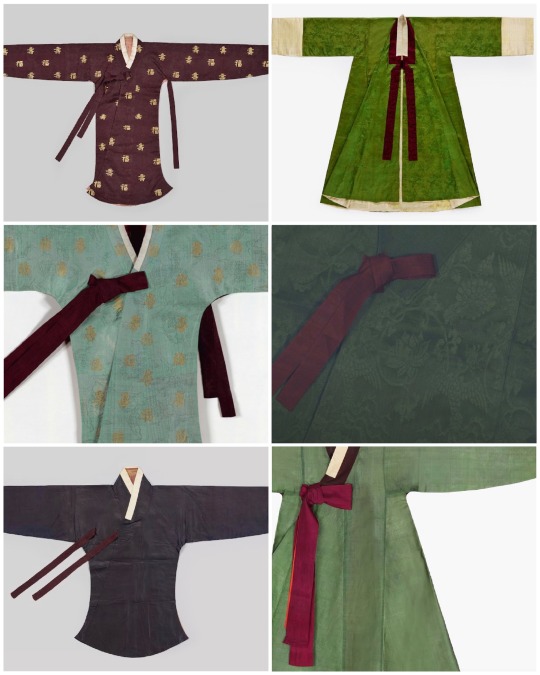

From left to right; top to bottom: Princess Deok-on's Dang-ui, Ceremonial Jacket (1822-1844) [source].
Jang-ot Coat style veil (1800-1880) [source].
Ceremonial long jacket (Dangui) of the consort of Imperial Prince Yeong [source].
Dang-ui, Jacket of Queen of abdicated King Gwanghae, Queen Yoo (1700s) [source].
Hang-a-dang-ui, Long Jacket for court lady which was worn during Princess Deokori’s wedding in 1837 (1800s) [source].
Jang-ot, Princess Deokon's coat style veil (1822 - 1844) [source].
Dangui, Semi-ceremonial jacket of Princess Deokon (1822-1844) [source].
Reproduction of a jeogori of intellectual madam Haepyeong Yoon (해평윤) (1835-1920) [source].
We also have purple accessories:

From left to right; top to bottom: Maegae-daenggi, Side ribbon worn by court women to fix their wigs to their heads, particularly when sporting the eoyeo haistyle (date unknown) [source].
Jebuburi-daenggi, Ribbon in swallow’s beak-shape used by princesses, usually for ceremonies. The name of the ribbon comes from the “beak-like” triangle shape of the ends (date unknown) [source].
Joseon women’s ceremonial coronet (Jokduri) used as wedding accessory (date unknown) [source].
Pendant (norigae) with three main ornaments (Eunbangadari-samjak-norigae) passed down in the family of Song Siyeol (ca. 19th century) [source].
Angular belt (Hyeokdae) worn with official uniform (date unknown) [source].
Soryebokdae official’s belt for semi-formal small ceremonies (19th century) [source].
What seems to be purple paint in murals too:

A detailed view of the mural on the western wall of the main chamber of the Goguryeo period Tokhung-ri (Deokheung-ri; 덕흥리) Tomb (Northeast Asian History Network, 2011). The color on this and several other murals in the tomb appear to be purple which may be because actual purple was used or the red paint oxidized giving it its purple appearance [source].
Back to wonsam:
Purple wonsam were worn mainly by 3 kinds of people in three different situations.
Crown Princesses: Their wonsam were deep purple with only Chinese characters for good fortune made out of gold leaf or thread allowed as decorations. Only queens were allowed to have floral and animal motifs. Crown princesses wore purple wonsam for important ceremonies.
Royal concubines after they gained favor from the king and were required to attend a formal ceremony wearing the wonsam. Their wonsam too could only be decorated with Chinese characters.
Any commoner woman, no matter how low, could wear a purple wonsam with no decorations for her wedding day. Her husband would also dress in an official’s purple danryeong with no insignia.
Examples of purple wonsam:

From top to bottom; left to right: Front view of the only purple wonsam with phoenix insignia known to exist from King Gojong’s concubine, Lee Wan Deok (이완덕, 1887-1970); official name Gwanghwadang (광화당) [source].
View of collar of Gwanghwadang-wonsam [source].
Front view of phoenix insignia of Gwanghwadang-wonsam [source].
Back view of Gwanghwadang-wonsam with phoenix insignia removed [source].
Korean actress, Kang Sooyeon, wearing a purple wonsam for period costume drama Ladies of the Palace or Women’s World (여인천하; 2001) [source].
Image of purple wonsam of rental shop [source].
Purple wonsam shown at an exhibit [source].
Although at the beginning of Joseon men were allowed to wear insignia on their purple danryeong, this eventually died down until no commoner was allowed to do so. Because the purple dye (as well as the other dyes on the outfit), silk, and accessories were too expensive for the average commoner to afford (if it was up to them to procure all articles necessary to officiate the wedding they wouldn’t be able to wed at all), the local government would most likely have kept a certain amount of wonsam and danryeong around and would loan it for a day to the couple getting married. After the ceremony, the clothes and accessories were given back to the local officials to be distributed again to another couple. Dressing themselves in such expensive fabrics and dyes plus wearing the hats, wigs, pins, jewelry, and shoes, with the horse and servant procession, was a great honor and a once-in-a-life-time moment. Even to this day, purple wonsam and danryeong is still worn in traditional Korean weddings. Another use for the purple danryeong, as used by court officials, was for mourning.
Just to show how incredibly different natural Korean purple was to the synthetic dye that was introduced to the peninsula, here are a few pictures. Notice how this purple is more blue in color and that all of the dates from these examples range from the 19th century to the 20th century. All of these articles are from the upper class because they were the first to get their hands on the novel synthetic dyes brought from the West. It would take decades before every day people could afford to wear and buy purple. Granted, I cannot 100% confirm that the items below were dyed using synthetic dyes or if they were the result of a new dyeing technique. However, their color is clearly different from earlier examples of natural plant dye and I’m not sure whether they can be achieved naturally. What do you think?

From top to bottom: Queen Yeongchin’s (1901-1989) shoes (early 20th century) [source].
Jeogori fur-lined jacket (1900-1935) [source].
Okdae, Official’s belt (20th century) [source].
Tteo-guji, Wooden wig (20th century) [source].
Nubi-jeogori, King Gojong’s Quilted Jacket (1864-1907) [source].
Geumgwang unknown date [source]
…And that concludes my useless trivia moment. Next time you see a purple hanbok in a historical drama that makes your corneas burn from the sheer saturation, you can think back to this post and wonder why on God’s name they decided to go for that color and suffer as much as I do ☺️. Hope you left this post having learned something new or not as bored as when you started reading.
~ hunni
In-Text References
Anderson, M. (2019, January 13). A history of natural dyes - Episode 1 - Korean natural dyes [Blog]. Nutmeg. https://www.nutmegfibers.com/nutmegfibers/2018/11/26/slow-color-korea-nat-dyes-wip?format=amp
Cartwright, M. (2016, September 15). Bone Rank System. World History. https://www.worldhistory.org/Bone_Rank_System/
Cartwright, M. (2016, July 16). Tyrian purple. World History. https://href.li/?https://www.worldhistory.org/Tyrian_Purple/
Cho, H. R., Cho, Y., Kim, J., Seo, D. B., Kim, S. H., Lee, S. J., & Kim, N. I. (2008). The effect of Gromwell (Lithospermum erythrorhizon) extract on the stratum corneum hydration and cramides content in Atopic Dermatitis patients. Annals of Dermatology, 20(2), 56–66. https://doi.org/10.5021/ad.2008.20.2.56
Dekel, S. T. (2020, July 31). Sappan reds and purples [Blog]. Suzanne Dekel. https://www.suzannedekel.com/amp/sappan-reds-and-purples
Kim, J. (2016, February 2). hanbok, geu aleumdaum sog-e damgin yeogsa sangsig [Hanbok, the common sense of history in its beauty]. SK Careers Journal. https://www.skcareersjournal.com/m/468
Kim, S. (2014). Kinds and types of dyes uses in the Joseon Dynasty [Abstract]. Journal of the Korean Society of Clothing and Textiles, 38(2), 201-215. http://dx.doi.org/10.5850/JKSCT.2014.38.2.201
Kim, H. (2020, March). Shades of history: Color’s societal roles. Korea. https://www.kocis.go.kr/eng/webzine/202003/sub01.html
Park, H. (2009). Color rank system of the court wonsam of Joseon Dynasty [Abstract]. Journal of the Korean Society of Clothing and Textiles, 33(10), 1552-1563. DOI:10.5850/JKSCT.2009.33.10.1552
Song, S., & Hong, N. (2019). A study on synthetic dyes used in insignia badges [Abstract]. The Korean Society of Costume, 69(4), 104-122. DOI: 10.7233/jksc.2019.69.4.104
427 notes
·
View notes
Photo

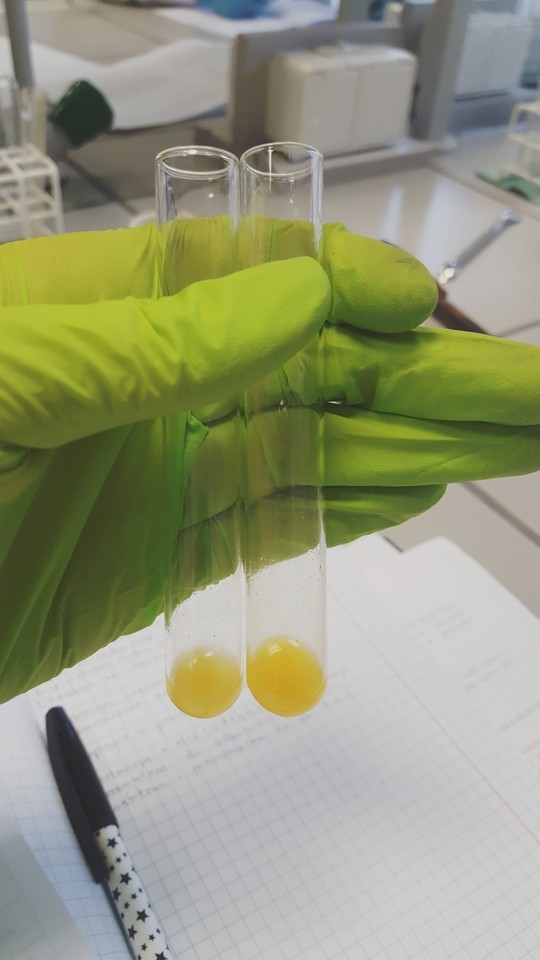

16/11/2017
Drug Chemistry Lab
I had sulfasalazine to detect. I checked solubility in water and methanol and I did one characteristic reaction.
#pharmacy#pharmablr#study#studyblr#science#chemistry#test-tube#test-tubes#orange#chemical compund#green gloves#drug chemistry#uni#pharmacy student#science geek#cosima
26 notes
·
View notes
Text
OPEN IT AT YOUR OWN RISK
JUST DON'T WANT YOU TO FAINT AFTER READING THIS.
ELASTICITY
THERMAL EXPANSION
CALORIMETRY AND HEAT TRANSFER
KINETIC THEORY OF GASES
THERMODYNAMICS
FLUID MECHANICS
NLM
ORGANIC COMPUNDS
EUDIOMETRY
IDEAL GAS
REAL GAS
CHEMICAL EQULIBRIUM
S BLOCK AND P BLOCK ELEMENTS
PERMUTATION AND COMBINATION
BINOMIAL THEOREM
SOLUTIONS OF TRIANGLE
CIRCLE
LOGARITHM
POINT AND STRAIGHT LINE
DETERMINANT
Just want to say that these are the topics I have to study for the exam which is after about 45 days.
and yeah 2 languages and extra subjects also I.T. and music.
That's why I am taking a break now. -_-
I wrote these topics so it reminds me how much I have to study and how less time I have got.
I'm sorry if I have'nt answered any asks till yet. I'm off for a few days now otherwise I'll totally get mad. So maybe no posts till my exams are over.
Thanks for wasting your precious time on my useless rant.
#i-desire-jake#i hate physics from the depth of my heart#exam rant#I'm on a break now#sorry for......
13 notes
·
View notes